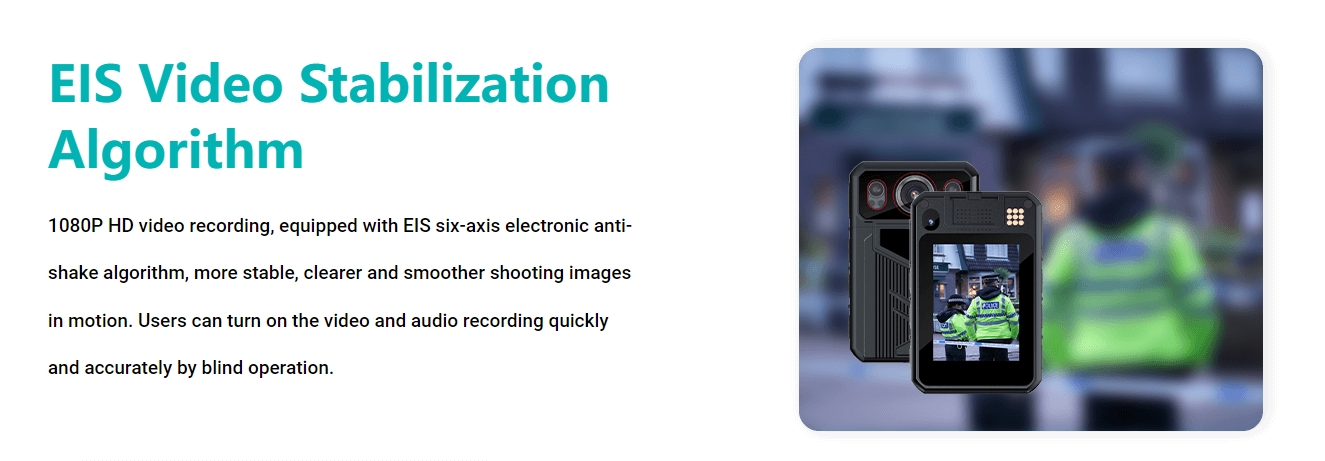In recent years, body-worn cameras have gained popularity in various industries, such as law enforcement, private security, and field services. These compact devices offer a reliable way to capture audio and video footage, providing an objective account of events and enhancing accountability. However, However, there are also a wide range of models on the market, and choosing the right body worn camera can be a difficult task for the consumer. In this blog post, we will explore seven essential tips to consider when selecting a body-worn camera, ensuring you make an informed decision that meets your specific needs.
Section 1: Purpose and Use Cases
* Define Your Needs: Begin by identifying the purpose and desired outcomes of using a body-worn camera. Are you looking for evidence collection, employee training, or enhancing accountability? Understanding your specific requirements will help you narrow down your options and make an informed decision.
* Consider Use Cases: Different industries have varying needs when it comes to body-worn cameras. Analyze the specific use cases relevant to your industry and consider features like night vision, waterproofing, and ruggedness.
Section 2: Video and Audio Quality
* Resolution: Look for a body-worn camera that offers high-resolution video recording, preferably at least 1080p or higher. This ensures clear and detailed footage that can be used effectively as evidence.
* Frame rate: Takes into account the camera's frame rate capabilities. Higher frame rates enable smoother video playback, making it easier to analyze details and actions accurately.
* Audio Recording: Ensure that the body-worn camera you choose has clear audio recording capabilities. Look for features such as noise cancellation and adjustable audio levels to capture important dialogue accurately.

Section 3: Storage Capacity and Battery Life
* Storage Options: Check the camera's storage capacity and consider whether it has expandable storage options. Depending on your needs, it may be crucial to have ample storage to capture extended periods of footage without interruption.
* Battery Life: Evaluate the battery life of the camera and choose one that aligns with your intended use. Look for a body-worn camera that can operate for an extended period without needing frequent recharging.
Section 4: Durability and Design
* Ruggedness: Depending on your industry, choose a body-worn camera that can withstand harsh conditions. Look for features like water and dust resistance, shock resistance, and durability against accidental drops.
* Discreetness: For certain industries or scenarios, the camera's discreetness may be important. Consider the design and size of the body-worn camera to ensure it does not interfere with the intended operation or draw unnecessary attention.

Section 5: Ease of Use and Accessibility
*Intuitive Interface: Select a body-worn camera that has an easy-to-use interface, minimizing the learning curve for users. Quick-access buttons and clear indicators can save valuable time in critical situations.
*Video Retrieval and Management: Consider how easily the recorded footage can be accessed and managed. Look for features like wireless file transfer, cloud storage options, and compatibility with existing systems or software for efficient retrieval and analysis.
Section 6: Connectivity and Integration
*Wireless Capability: Evaluate whether the body-worn camera offers wireless connectivity options, such as Wi-Fi or Bluetooth, to streamline data transfer and integration with other devices or systems.
*Compatibility: Make sure the camera is compatible with your existing equipment or software. Integration with evidence management systems and platforms can streamline the overall workflow and maximize the camera's potential.
Choosing the right body-worn camera is essential to achieve the intended benefits, whether it is improving evidence collection, enhancing accountability, or ensuring employee safety. By considering your specific needs, evaluating factors like video and audio quality, storage capacity, battery life, durability, ease of use, and connectivity options, you can make an informed decision that aligns with your organization's goals. Remember, investing time and effort into research and evaluation can lead to an effective body-worn camera solution that meets your requirements and delivers long-term value.


 French
French German
German Arabic
Arabic Italian
Italian Spanish
Spanish Japanese
Japanese Persian
Persian Korean
Korean Chinese (Simplified)
Chinese (Simplified)









